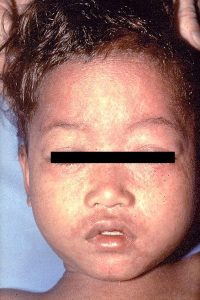By NewsDesk @infectiousdiseasenews
Since late 2018, there has been a dramatic increase in localized measles outbreaks across the country. On 6 February 2019, the Department of Health (DOH) declared a measles outbreak in the National Capital Region (NCR) and Region 3 (Central Luzon).

On the 7 February 2019, DOH announced that the measles outbreak had spread to more areas in Luzon and Visayas in CALABARZON, Region 6 (Western Visayas) and Region 7 (Central Visayas).
From the beginning of 2019 through November 23, Philippines health officials reported 44,014 measles cases, including 576 measles related deaths, for a case fatality of 1 percent.
Philippines dengue cases top 400,000 cases for 2019, Malaysia and Thailand updates
During the most recent week data available, we see reported cases of measles are declining. There were 107 cases reported the week ending Nov. 23.
Measles is a highly contagious virus that lives in the nose and throat mucus of an infected person. It can spread to others through coughing and sneezing. Additionally, measles virus can live for up to two hours in an airspace where the infected person coughed or sneezed. Children below five years of age are more susceptible to this virus and it is also transmitted through breast milk to newborn children, if the mother has measles. Measles is a vaccine preventable disease and a herd immunity against measles can be achieved by immunizing at least 95 per cent people in a community.
Brucellosis in China: Students test positive at 2nd veterinary research facility
China reports two human H9N2 avian flu cases
Philippines: Davao school closed due to chickenpox outbreak
Polio in Malaysia: 1st case reported in 27 years


One thought on “Philippines measles outbreak 2019: 44K cases, 576 deaths”